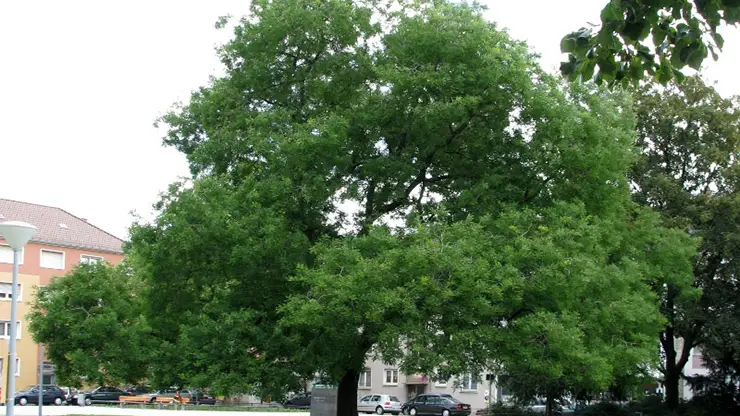

Japanese Pagoda
Styphnolobium japonicum (L.) Schott
Japanese Pagoda
Styphnolobium japonicum (L.) Schott
“Some of these uses include the treatment of bleeding… hypertension, and dizziness…”– Economic & Ethnobotanical Uses
 Full plant, Styphnolobium japonicum (Frank-m, 2009)
Full plant, Styphnolobium japonicum (Frank-m, 2009)


Summary
Taxonomy
(How things are grouped and categorized based on shared traits.)- Kingdom: Plantae
- -Phylum: Streptophyta
- –Class: Equisetopsida
- —Subclass: Magnoliidae
- —-Order: Fabales
- —–Family: Fabaceae
- ——Genus: Styphnolobium
- ——-Species: japonicum
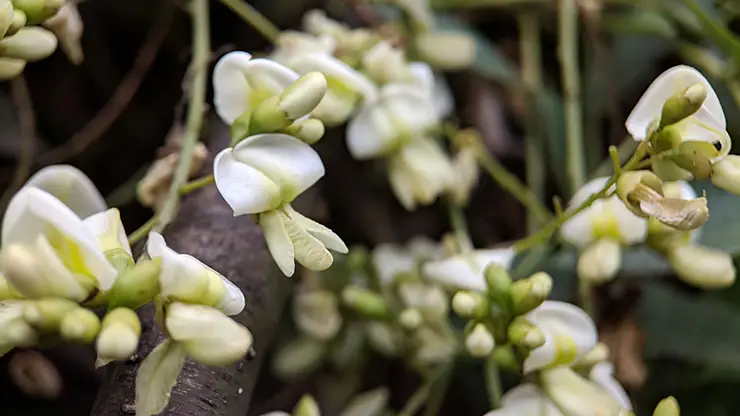
Taxonomic History:
Styphnolobium japonicum has at least 34 different synonyms with the most recent and commonly occurring being Sophora japonica (POWO, 2024). Research has been done to show that the genus Sophora has a chromosome count of 28 or variables of 28, yet the reclassified Styphnolobium japonium has only 18 which is not a variable of 28. Styphnolobium also does not harbor the same nitrogen fixing bacteria that Sophora does. Thus, Sophora japonica has officially been reclassified as Styphnolobium japonicum (Santamour and Riedel, 1997).
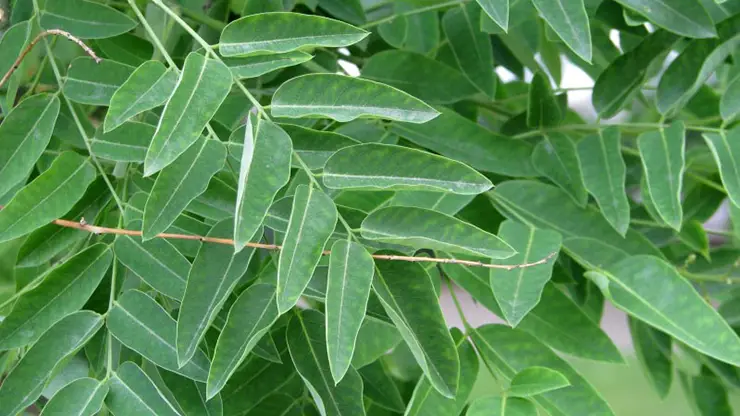
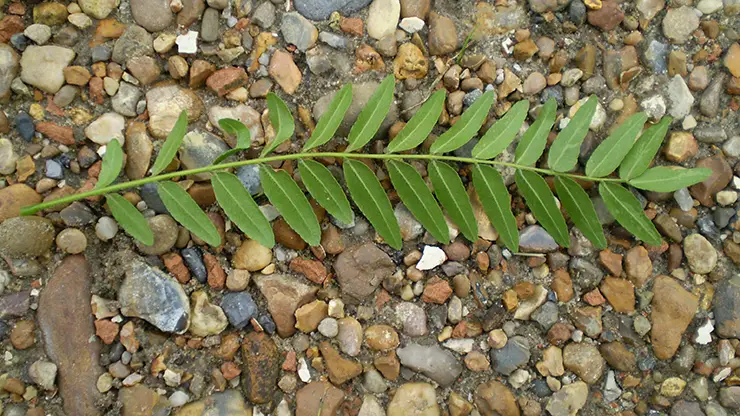

Identification Tips
At the park, it is easy to confuse Styphnolobium japonicum with Gleditsia triacanthos, Honey Locust, as they are both tall trees with compound leaves. The size and number of their leaflets are useful for determining between them. The Japanese Pagoda has 7 – 17 leaflets that are up to 6 cm long while the Honey Locust has 20 – 30 leaflets that are up to 3.5 cm long.

Fun Fact!
Despite what its scientific name would suggest, S. japonicum is not native to Japan – It is native to China and was introduced and naturalized to Japan in antiquity (POWO, 2024).

Fun Fact!
Trees only flower once the tree is at least 30-40 years old.
Native Range:
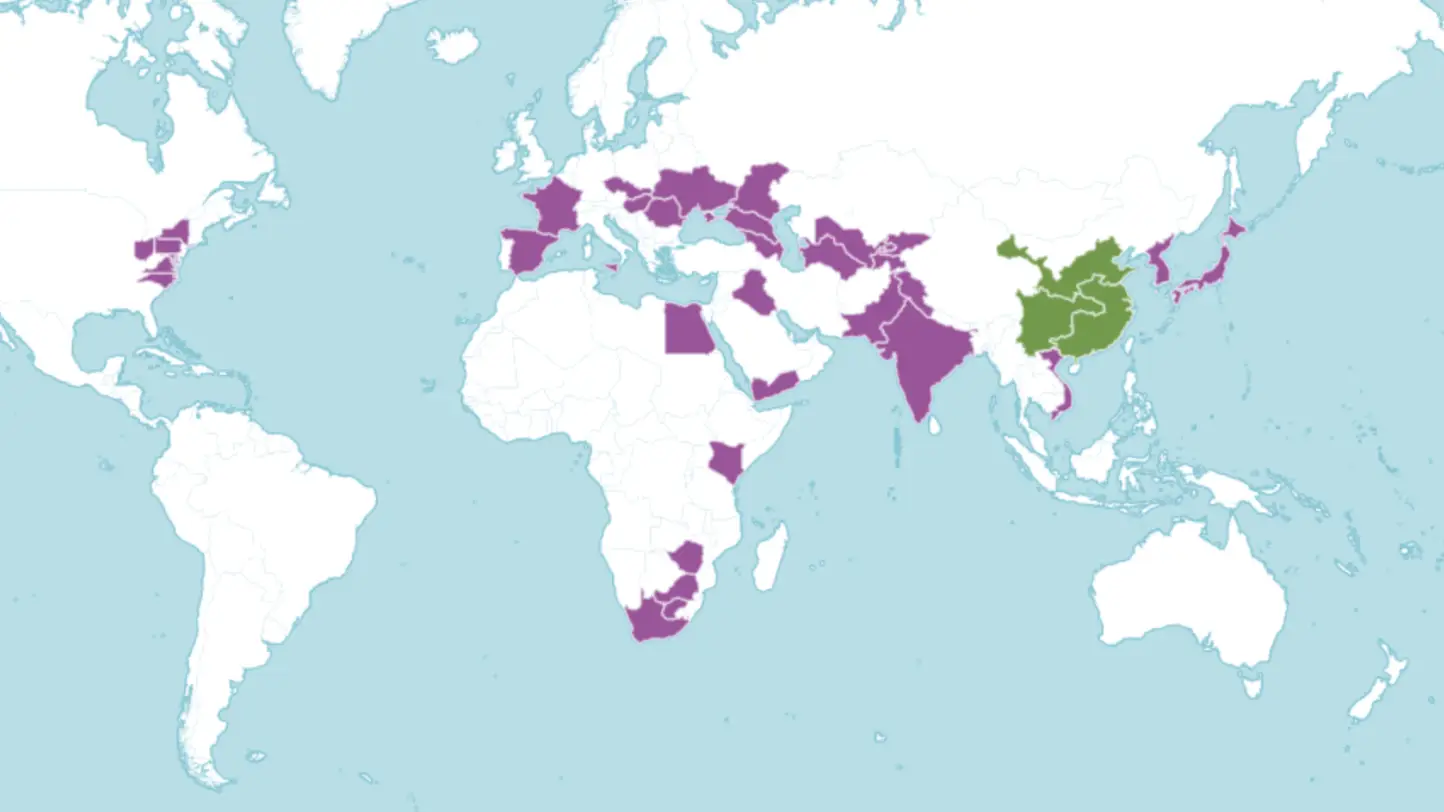

Native

Introduced
Plant Ecology/Habitat
Styphnolobium japonicum does best when grown in medium moisture soil that is also well-drained and has full sun. The species can also grow in partial shade and is tolerant of city pollutants. Once the sapling has been established, S. japonicum has also been noted to be heat tolerant and able to survive a partial drought (MBG, n.d.). The flowers usually bloom between July and August and the fruit matures during August to October.

Economic or Ethnobotanical Uses
- Styphnolobium japonicum’s economic uses are mostly ornamental and for timber (POWO, 2024).
- The list of ethnobotanical uses for S. japonicum is long and dates back centuries. Some of these uses include the treatment of bleeding hemorrhoids, intestinal hemorrhage, hypertension, and dizziness (He et. al., 2016).
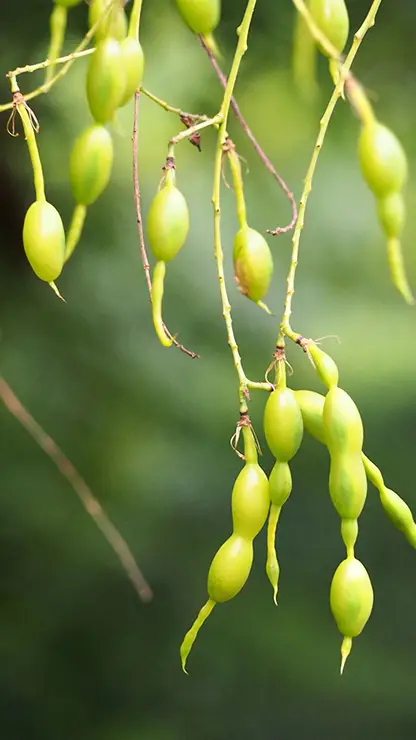

Conservation Status
Styphnolobium japonicum is not a threatened species (POWO, 2024).
Additional Resources

References

- Frank (2009). Styphnolobium japonicum. [Photograph]. Wikimedia Commons. https://commons.wikimedia.org/wiki/File:Styphnolobium_japonicum_1348.jpg
- Frank-m (2009). Styphnolobium japonicum. [Photograph]. Wikimedia Commons. https://commons.wikimedia.org/wiki/File:Styphnolobium_japonicum_1347.jpg
- He, X., Bai, Y., Wang, X., Fang, J., et al. (2016). Local and traditional uses, phytochemistry, and pharmacology of Sophora japonica L.: A review. Journal of Ethnopharmacology 187: 160-182. https://www.sciencedirect.com/science/article/pii/S0378874116302057
- Hille, R. (2007). Gleditsia triacanthos. [Photograph]. Wikimedia Commons. https://commons.wikimedia.org/wiki/File:Gleditsia_triacanthos_0.1_R.jpg
- Jiao, S. (2018). Styphnolobium japonicum. [Photograph]. Wikimedia Commons. https://commons.wikimedia.org/wiki/File:Styphnolobium_japonicum–IMG_20181009_100037.jpg
- Kwiecien, A. (2018). Styphnolobium japonicum fruits. [Photograph]. Wikimedia Commons. https://commons.wikimedia.org/wiki/File:Styphnolobium_japonicum_Pere%C5%82kowiec_japo%C5%84ski_2018-09-02_01.jpg
- MBG (n.d.) Styphnolobium japonicum (Japanese Pagoda). [website]. Missouri Botanical Garden. Retrieved October 2024, from https://www.missouribotanicalgarden.org/PlantFinder/PlantFinderDetails.aspx?kempercode=c149
- POWO (2024). Plants of the World Online. Facilitated by the Royal Botanical Gardens, Kew. Published on the Internet. Retrieved October 9, 2024 from https://powo.science.kew.org/taxon/urn:lsid:ipni.org:names:1119529-2
- Santamour, Jr, F.S., and Riedel, L.G.H. (1997). A New Name for Sophora japonica. Journal of Arboriculture 23(4): July 1997. https://auf.isa-arbor.com/content/23/4/166
- Welsh, S.L., Atwood, N.D., Goodrich, S., and Higgins, L.C. (2003). A Utah Flora: Third Edition, revised. Brigham Young University Press. Provo, UT.
